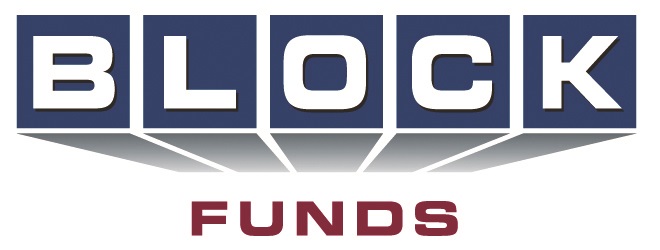Blog
Buy fake United States Dollar
How to Identify Fake US Dollar Bills: A Comprehensive Guide
Counterfeit currency has been a persistent issue throughout history, and the United States dollar (USD), as the world’s most widely used currency, is a prime target for counterfeiters. Fake bills can affect businesses, individuals, and the economy at large, leading to significant financial losses. Fortunately, with some basic knowledge, you can protect yourself from falling victim to counterfeit currency. In this guide, we’ll walk you through how to identify fake US dollar bills, the key security features to look for, and what steps to take if you encounter counterfeit money.
Why Counterfeit Currency is a Serious Problem
Counterfeit US dollars not only harm individuals and businesses but also disrupt the economy. When counterfeit bills circulate, they reduce the value of real currency and lead to inflation. Businesses that unknowingly accept counterfeit money can suffer direct financial loss, as they typically won’t be compensated for fake currency once it’s discovered. On a larger scale, it damages the trust that people place in the currency, which is crucial for smooth economic operations. Therefore, knowing how to spot a fake USD bill is a valuable skill for everyone, from cashiers to everyday consumers.
Key Security Features of Authentic https://blockfundssolution.com/product/buy-fake-british-pounds/s
The US government has implemented several advanced security features to make counterfeiting extremely difficult. Learning to recognize these features is your best defense against fake bills.
1. Watermarks
Most US bills, especially those of higher denominations like $10, $20, $50, and $100, have a watermark embedded within the paper. To check for the watermark, hold the bill up to a light. You should see a faint image of the portrait on the bill. If the watermark is absent or doesn’t match the face on the bill, it’s likely a counterfeit.
2. Color-Shifting Ink
Look at the bottom right corner of bills such as the $10, $20, $50, and $100. The number indicating the denomination is printed with color-shifting ink. Tilt the bill back and forth, and the color should change from copper to green. Counterfeiters often miss this detail, or the color change may be imperfect.
3. Security Thread
All genuine https://en.wikipedia.org/w/index.php?search=Buy+cloned+reloadable+prepaid+card&title=Special%3ASearch&ns0=1 of $5 and higher have a security thread embedded vertically. This thread can be seen when holding the bill up to a light. It will glow under ultraviolet (UV) light: blue for $5 bills, green for $20, orange for $50, and red for $100. The thread also contains tiny, printed words that repeat the denomination of the bill.
4. Raised Printing
The US dollar uses a special process that gives authentic bills a slightly raised texture, particularly on the portrait and denomination numbers. If you run your fingers over the bill and it feels unusually smooth, it could be fake. Real bills have a distinctive feel that comes from the unique paper and ink used in the printing process.
5. Microprinting
Microprinting is small, detailed text that is difficult to reproduce with standard printers. On real bills, you can find microprinting around the portrait and in specific areas like the edges of the bill. For example, on a $100 bill, the words “The United States of America” are printed along Benjamin Franklin’s collar. Use a magnifying glass to check if the text is clear and not blurry.
Common Signs of Counterfeit Bills
Even with security features in place, counterfeiters continue to improve their methods. However, fake bills still exhibit telltale signs that can help you identify them:
Blurry or Misaligned Printing: Genuine bills have very crisp printing. If the images or text on the bill are blurry or misaligned, that’s a strong indication of a counterfeit.
Incorrect Paper: Real US dollar bills are printed on a special blend of cotton and linen, which gives them a unique texture. Fake bills often feel too smooth or too stiff because counterfeiters typically use standard paper. Authentic bills also wear differently, while counterfeit bills tend to age poorly.
Wrong Serial Numbers: Compare the serial numbers on the bill. If two bills of the same denomination have identical serial numbers, one is counterfeit. Counterfeiters often overlook this detail when producing fake bills in bulk.
Tools for Verifying US Dollar Bills
If you handle cash regularly or just want extra peace of mind, there are some tools you can use to verify the authenticity of US dollar bills.
1. UV Light
A UV light can help you quickly identify counterfeit bills. The security thread on real bills glows a specific color under UV light, which is one of the easiest ways to spot a fake.
2. Magnifying Glass
Many security features, such as microprinting, are too small to see with the naked eye. A magnifying glass can help you check for this critical detail.
3. Counterfeit Detector Pen
These pens contain a solution that reacts with regular paper, turning dark if the paper is not genuine US currency paper. However, these pens are not always reliable since some counterfeiters have found ways to bypass them by bleaching lower-denomination bills and printing higher denominations over them.
What to Do if You Suspect a Fake Bill
If you believe you’ve encountered a counterfeit bill, it’s important to follow the proper steps to avoid legal trouble and financial loss:
Don’t Accept It: If you suspect a bill is fake while in a transaction, politely refuse it and ask for another form of payment.
Notify the Authorities: Contact local law enforcement or the U.S. Secret Service, which handles counterfeit currency investigations.
Do Not Return the Bill to the Person Who Gave It to You: If you’re already in possession of the bill, don’t give it back to the person who passed it to you. This could raise suspicion that you’re involved in distributing counterfeit money.
Be Cautious: If you’re in a business setting, avoid confrontation. Keep the bill in a safe place and report it as soon as possible.


